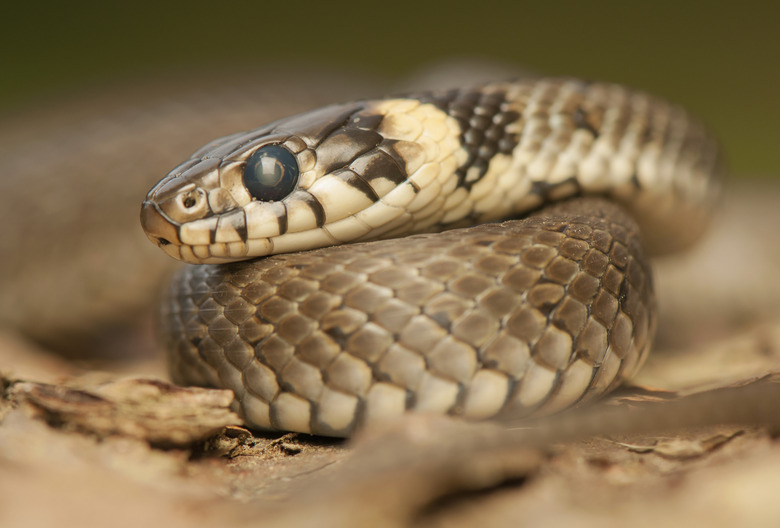What Is The Importance Of Snakes In The Ecosystem?
Snakes are important elements in their native environments, regulating the populations of their prey. They're exclusively carnivores, which means that they're predators.
But, snakes can sometimes also be prey for other predators, including other snakes. They can present a threat when they're an invasive species in an ecosystem where there's little or nothing to regulate their population.
Both the introduction and removal of snakes can have unforeseen effects on an ecosystem. The usefulness of snakes ranges from their ecological importance to the economic importance of snakes in both pet and healthcare industries.
Snakes as Population Controllers
Snakes as Population Controllers
As carnivores, snakes keep the numbers of their prey down. Rodents provide the best example, as they reproduce exponentially in the absence of predators, as long as there's food. While this is true in a natural environment, it's particularly true in an artificial environment like any kind of food storage area.
The University of Nebraska estimates that mice cause $20 million in damage annually in Nebraska alone. Snakes can slowly prowl to hunt, able to enter burrows and tight spaces where other predators like cats or hawks can't go, and traps can't be set.
Snakes Aren't Always on Top in the Web of Life
Snakes Aren't Always on Top in the Web of Life
Since snakes aren't always the top predator, they can become prey for higher predators. In that role in the web of life, they pass the bounty of their prey's population boom up the food chain. When a large prey population attracts and sustains a large snake population, those snakes become plentiful prey for birds like hawks and herons, or mammals like skunks and raccoons.
Some snakes specialize in preying on other snakes, like the kingsnake, which can prey on rattlesnakes because they are immune to rattlesnake venom.
Introducing Snakes Disrupts the Food Chain
Introducing Snakes Disrupts the Food Chain
Since the 1990s, large constrictor snakes of several species have established themselves in southern Florida. They threaten the populations of mammal, reptilian and avian prey who do not recognize the snakes as predators.
An older example of invasive snakes is the brown tree snake, which was introduced to Guam sometime in the 1950s. It hunts in trees among birds who don't expect it. Eradication efforts have gone so far as to air-drop mice dosed with acetaminophen as poison bait.
Snakes Cause Cascading Effects Both Good and Bad
Snakes Cause Cascading Effects Both Good and Bad
Snakes can play a role in the complicated food web of inter-species relationships. For example, timber rattlesnakes in the eastern U.S. prey upon mice who are hosts to black-legged ticks. Those ticks are a vector for Lyme disease, a bacterial infection.
When the snakes reduce the number of mice, the prevalence of Lyme disease in the environment is reduced. In the case of the brown tree snake, its predation on native pollinators and seed distributors like birds and lizards has reduced the ability of native plants to regenerate, which has reduced plant cover on Guam.
Economic Importance of Snakes
Economic Importance of Snakes
While it isn't everyone's first thought, there are some important economic factors that snakes provide to the population. Snakes provide entertainment in zoos and as pets. The pet industry is worth over 72 billion dollars worldwide with snakes a key part of that industry.
Besides as pets and entertainment, the regulation of animals such and mice and other creatures that carry ticks has a direct impact on the healthcare industry. Without this control of those populations, the healthcare industry would be inundated with patients carrying tick-borne and rodent-borne diseases (like Lyme disease) at a much higher rate than exists now.
Another aspect of the healthcare affected by snakes is the anti-venom industry. Anti-venom is a huge part of the healthcare/pharmaceutical industry and is used as the primary treatment for people and pets who receive a venomous snake bite. This market is estimated to be worth 2.9 billion dollars by the year 2025.
References
- University of Nebraska: Controlling House Mice
- Scientific American: Python Predation: Big Snakes Poised to Change U.S. Ecosystems
- NBC News: Two Thousand Mice Dropped on Guam by Parachute — to Kill Snakes
- Global Invasive Species Database: Boiga Irregularis (Reptile)
- American Pet Products Association: Pet Industry Market Size & Ownership Statistics
- Globe News Wire: Anti-Venom Market to Be Worth $2.9 Billion by 2025
Cite This Article
MLA
Silbajoris, Alex. "What Is The Importance Of Snakes In The Ecosystem?" sciencing.com, https://www.sciencing.com/importance-snakes-ecosystem-8078550/. 13 June 2019.
APA
Silbajoris, Alex. (2019, June 13). What Is The Importance Of Snakes In The Ecosystem?. sciencing.com. Retrieved from https://www.sciencing.com/importance-snakes-ecosystem-8078550/
Chicago
Silbajoris, Alex. What Is The Importance Of Snakes In The Ecosystem? last modified March 24, 2022. https://www.sciencing.com/importance-snakes-ecosystem-8078550/
